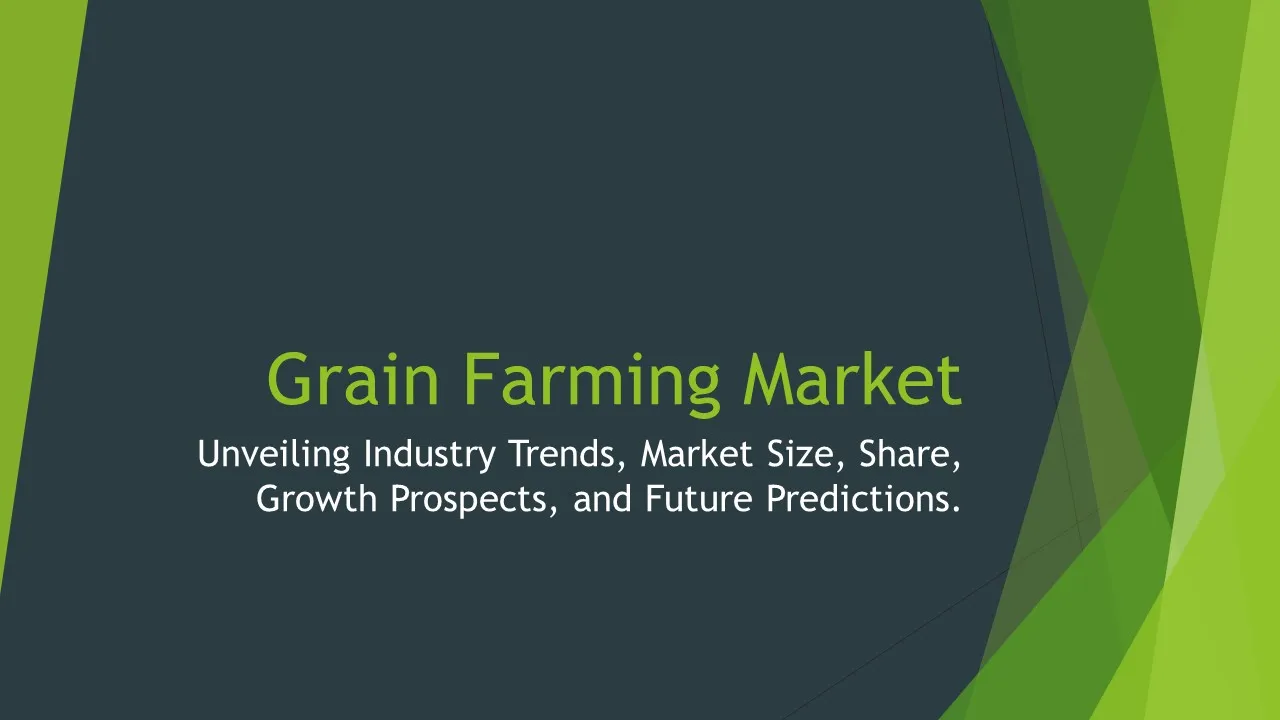Feed Carbohydrase Sales
Carbohydrase Sales Market Segments - by Product Type (Amylase, Glucoamylase, Cellulase, Xylanase, Pectinase), Application (Food & Beverage, Animal Feed, Pharmaceuticals, Textile, Others), Distribution Channel (Direct Sales, Indirect Sales), Ingredient Type (Enzyme Preparations, Starch, Cellulose, Hemicellulose, Lignin), and Region (North America, Europe, Asia Pacific, Latin America, Middle East & Africa) - Global Industry Analysis, Growth, Share, Size, Trends, and Forecast 2025-2035
- Report Preview
- Table Of Content
- Segments
- Methodology
Feed Carbohydrase Sales Market Outlook
The global Feed Carbohydrase sales market is projected to reach USD 1.5 billion by 2035, growing at a CAGR of 6.8% during the forecast period of 2025-2035. This growth is primarily driven by the increasing demand for feed enzymes in livestock diets, which enhances nutrient digestibility and contributes to better animal health and performance. Changing dietary preferences among consumers are also leading livestock producers to seek out effective feed formulations that meet both nutritional needs and regulatory requirements. Furthermore, the rising awareness regarding animal welfare and sustainable livestock practices is further propelling the adoption of carbohydrases, which help in reducing feed costs while ensuring optimal growth rates in animals. The expansion of the animal feed industry, particularly in developing regions, coupled with advancements in enzyme technology, is expected to provide a substantial push to the market's growth trajectory.
Growth Factor of the Market
Several key factors contribute to the expansion of the Feed Carbohydrase sales market. First and foremost is the increasing demand for high-quality animal protein and dairy products, which necessitate the use of efficient feed enzymes to enhance livestock productivity. Additionally, the growing trend towards sustainable farming practices is driving the adoption of enzyme-based solutions that improve feed conversion ratios while minimizing waste. Technological advancements in enzyme formulations, including the development of more potent and specific carbohydrases, are also facilitating market growth by providing improved performance across diverse animal species. Furthermore, regulatory encouragement for enzyme usage in animal feed, as well as heightened consumer awareness regarding the nutritional benefits of enzyme supplementation, are vital elements fostering market growth. Lastly, the expansion of the global livestock population, particularly in regions such as Asia Pacific and Latin America, signifies a promising future for the Feed Carbohydrase market.
Key Highlights of the Market
- The global Feed Carbohydrase market is expected to reach USD 1.5 billion by 2035.
- CAGR of 6.8% projected during the forecast period of 2025-2035.
- Increased demand for high-quality animal feed ingredients driving market growth.
- Technological advancements leading to more efficient feed enzyme formulations.
- Expansion of livestock industries in developing regions enhancing market potential.
By Product Type
Amylase:
Amylase is a crucial enzyme in the Feed Carbohydrase market that plays a vital role in the breakdown of starches into simpler sugars. This enzyme is particularly significant in animal nutrition as it facilitates the digestion of carbohydrates, improving nutrient absorption and overall feed efficiency. With the rising demand for starch-based animal feeds, particularly in poultry and swine production, the market for amylase is witnessing considerable growth. Furthermore, advancements in amylase formulations, including thermostable varieties, are enhancing its effectiveness across a range of feed conditions, thereby increasing its adoption among livestock producers. As a result, the amylase segment is expected to maintain a significant share in the overall Feed Carbohydrase market.
Glucoamylase:
Glucoamylase is another essential product type that specializes in the hydrolysis of starch to produce glucose. Its unique action makes it particularly beneficial for applications where rapid sugar release is necessary, such as in high-energy animal diets. The rising importance of glucose as a quick energy source for various livestock species is driving the demand for glucoamylase in feed formulations. Moreover, the versatility of glucoamylase, which allows it to be used effectively in combination with other enzymes to enhance feed digestibility further, contributes to its growing market share. As the focus on optimizing animal feed efficiency continues to rise, the glucoamylase segment is set for substantial growth in the coming years.
Cellulase:
Cellulase is an enzyme that catalyzes the breakdown of cellulose into glucose, making it an important component in feed formulations aimed at ruminants, particularly cattle and sheep. The inclusion of cellulase in animal diets enhances fiber digestibility, leading to improved nutrient release and utilization. With the increasing emphasis on maximizing the benefits of forage and other fibrous feed ingredients, the demand for cellulase is gaining traction. Additionally, the trend towards integrating more roughage in animal diets to promote environmental sustainability is expected to further bolster the cellulase segment in the Feed Carbohydrase market. As such, cellulase is poised to experience significant growth, aligning with the broader trends in livestock nutrition and sustainability.
Xylanase:
Xylanase is rapidly gaining attention in the Feed Carbohydrase market due to its ability to degrade xylan, a major component of plant cell walls. This characteristic makes xylanase particularly valuable for improving the digestibility of non-starch polysaccharides in feeds, especially for monogastric animals like poultry and swine. The enhanced fiber degradation facilitated by xylanase can lead to better nutrient absorption and reduced feed costs, which are critical factors for livestock producers. Moreover, as the demand for plant-based feed continues to rise, the role of xylanase in ensuring optimal nutrient release and overall feed efficiency is expected to drive its market adoption. Consequently, the xylanase segment is anticipated to witness significant growth as more producers recognize its benefits.
Pectinase:
Pectinase is an enzyme that aids in the degradation of pectin, a soluble fiber found in various fruits and vegetables. In the context of animal feed, pectinase enhances the digestibility of plant materials, particularly those rich in pectin, which is often included in the diets of herbivorous livestock. The increasing utilization of by-products from the fruit and vegetable processing industries as feed ingredients is promoting the demand for pectinase in feed formulations. Additionally, the enzyme's ability to improve gut health and nutrient absorption is an attractive proposition for livestock producers seeking to maximize animal performance. As a result, the pectinase segment is likely to experience consistent growth, driven by both the need for digestibility improvement and the adoption of sustainable feeding practices.
By Application
Food & Beverage:
The Food & Beverage segment is a significant application area for Feed Carbohydrases, as these enzymes play a crucial role in improving the quality and nutritional value of animal-derived food products. In this sector, carbohydrases are used to enhance feed formulations, leading to better growth rates and feed conversion efficiency in livestock. The increasing consumer demand for high-quality meat and dairy products is driving the incorporation of enzyme technology in feed formulations, further propelling market growth. Furthermore, as food safety and quality standards become more stringent, the use of feed enzymes to optimize animal health and performance will continue to gain momentum within the Food & Beverage industry.
Animal Feed:
The Animal Feed application segment is the primary domain where Feed Carbohydrases are employed, as these enzymes significantly enhance the digestibility of feed ingredients. They are utilized extensively across various livestock categories, including poultry, swine, cattle, and aquaculture, to improve overall feed performance. The growing awareness of the benefits of enzyme supplementation in animal diets is driving the adoption of carbohydrases in feed formulations. Additionally, with the rising costs of raw feed ingredients, producers are increasingly looking for ways to maximize feed efficiency through enzyme applications. As a result, the Animal Feed segment is expected to dominate the Feed Carbohydrase market, supported by the ongoing trends in livestock production and nutrition.
Pharmaceuticals:
The Pharmaceuticals segment is emerging as a noteworthy application area for Feed Carbohydrases, particularly in the production of animal health products and dietary supplements. Enzymes play a critical role in enhancing the bioavailability of active pharmaceutical ingredients (APIs) used in veterinary medicine. The increasing focus on animal health and wellness is driving the need for effective and efficient delivery systems that can be achieved through enzyme technology. Additionally, with the rise in preventive healthcare measures for livestock, the demand for enzyme-based formulations in the pharmaceutical sector is expected to grow, offering significant opportunities for the Feed Carbohydrase market.
Textile:
In the Textile application segment, Feed Carbohydrases are utilized primarily for their ability to improve the processing of textile fibers. While this application might not be the most conventional for animal feed enzymes, it highlights the versatility of carbohydrases in various industries. They are used in the finishing processes of textiles to enhance the quality and softness of fabrics. As the textile industry continues to seek sustainable and environmentally friendly alternatives to traditional processing methods, the inclusion of enzymes like carbohydrases is gaining traction. This trend indicates that while this segment may not dominate the Feed Carbohydrase market, it represents an interesting niche with potential for growth.
Others:
The Others segment encompasses a variety of applications that utilize Feed Carbohydrases beyond the primary sectors mentioned. This includes uses in biofuels, paper and pulp, and even in bioremediation processes. With the ongoing shift towards bio-based products and sustainable practices, the application of carbohydrases in these areas is projected to expand. As industries increasingly focus on reducing their carbon footprint and improving efficiency, the relevance of Feed Carbohydrases is likely to grow across these diverse applications. This segment represents an important growth opportunity for the Feed Carbohydrase market as innovators continue to explore novel uses for these enzymes.
By Distribution Channel
Direct Sales:
Direct sales channels are crucial for the Feed Carbohydrase market, as they enable manufacturers to establish strong relationships with livestock producers and feed manufacturers. By selling directly to customers, companies can offer tailored solutions that meet the specific needs of their clients, thus enhancing customer satisfaction and loyalty. This method also allows manufacturers to convey essential information about product benefits and usage directly to end-users, which can be pivotal in promoting enzyme adoption. With the increasing demand for customized feed solutions, the direct sales channel is projected to grow in importance within the Feed Carbohydrase market, as producers seek to optimize their feeding strategies.
Indirect Sales:
Indirect sales channels, including distributors and wholesalers, play a significant role in extending the reach of Feed Carbohydrases to a broader audience. These channels facilitate the efficient distribution of products across different regions, making them accessible to various segments of the livestock industry. The growing trend of consolidation in the feed industry is likely to enhance the significance of indirect sales, as larger companies often utilize these channels to streamline their operations. Additionally, indirect sales channels provide the advantage of established networks and market knowledge, which can be beneficial for promoting the benefits of carbohydrases to potential customers. As such, the indirect sales segment is expected to experience steady growth alongside the overall market expansion.
By Ingredient Type
Enzyme Preparations:
Enzyme preparations are at the forefront of the Feed Carbohydrase market, representing a comprehensive approach to enzyme supplementation in animal feed. These preparations typically contain a blend of various enzymes tailored to enhance the overall digestibility of feed ingredients. The increasing focus on improving feed efficiency and optimizing nutritional profiles in livestock diets is driving the demand for comprehensive enzyme preparations. Furthermore, advancements in enzyme formulation technologies have enabled the development of highly concentrated and effective preparations, further supporting their market growth. As livestock producers increasingly recognize the benefits of using a mix of carbohydrases, the enzyme preparations segment is set to dominate the Feed Carbohydrase market.
Starch:
The starch ingredient type plays a vital role in the Feed Carbohydrase market, as starch serves as a primary source of energy for many livestock species. The inclusion of carbohydrases that specifically target starch breakdown improves the digestibility of feed, allowing for enhanced nutrient absorption. With the growing emphasis on optimizing animal nutrition and productivity, the demand for starch-derived ingredient types is expected to rise. Additionally, the rising costs of feed ingredients have prompted livestock producers to seek more efficient alternatives, further driving the market for starch in enzyme applications. This segment aligns closely with the broader trends of improving feed efficiency and reducing overall feed costs in the livestock industry.
Cellulose:
Cellulose is another critical ingredient type in the Feed Carbohydrase market, primarily utilized for its fibrous properties in ruminant diets. The demand for cellulose is increasing as livestock producers recognize the importance of fiber in maintaining gut health and promoting efficient digestion. Carbohydrases targeting cellulose breakdown enhance nutrient availability from fibrous feed ingredients, leading to improved livestock performance. The trend of incorporating more roughage into animal diets, driven by sustainability considerations, is expected to bolster the demand for cellulose-based feed formulations. Consequently, the cellulose segment within the Feed Carbohydrase market is projected to grow steadily as more producers embrace fiber-enriched diets.
Hemicellulose:
Hemicellulose is a significant component of plant cell walls that plays a crucial role in the digestibility of animal feeds. Its presence in feeds often poses challenges for nutrient absorption in livestock, making the application of specific carbohydrases aimed at breaking down hemicellulose highly valuable. The rising awareness of the benefits of enzyme supplementation in optimizing feed efficiency is driving the demand for hemicellulose targeting solutions. Additionally, as livestock producers increasingly focus on improving feed conversion ratios, the utilization of hemicellulose-specific carbohydrases is expected to grow. This segment is anticipated to experience consistent growth as part of the broader drive towards making animal diets more digestible and efficient.
Lignin:
Lignin, while often considered an indigestible component of plant materials, is gaining attention in the Feed Carbohydrase market due to its impact on feed digestibility. Lignin can hinder the breakdown of other feed components, affecting nutrient absorption in livestock. The inclusion of specific carbohydrases that target lignin degradation can enhance the overall digestibility of feed formulations, making it possible for livestock to extract more nutrients from their diets. As the livestock industry continues to seek ways to optimize feed efficiency and reduce waste, the demand for lignin-targeting solutions is expected to rise. Consequently, the lignin segment represents an important opportunity for growth within the Feed Carbohydrase market.
By Region
The Feed Carbohydrase sales market exhibits notable regional variations, primarily influenced by the prevalence of livestock farming practices and the demand for animal feed in various geographical areas. North America is projected to lead the market, accounting for approximately 35% of the global share in 2035, driven by the well-established livestock industry and the increasing adoption of feed enzyme technologies. The region is characterized by advanced animal production systems and a high emphasis on animal health and nutrition, which directly supports the growth of the Feed Carbohydrase market. Furthermore, Europe, with a projected CAGR of 7.2%, is witnessing significant advancements in enzyme technology and a growing focus on sustainable animal farming practices.
In Asia Pacific, the Feed Carbohydrase market is expected to experience rapid growth, fueled by the expansion of the livestock sector and rising meat consumption rates. This region is projected to account for about 28% of the global market share by 2035. Countries such as China and India are driving the demand for feed enzymes as livestock producers increasingly recognize their importance in optimizing feed efficiency and overall animal performance. Moreover, Latin America and the Middle East & Africa are anticipated to contribute to the market growth through the ongoing developments in the livestock sector and the rising awareness of the benefits of enzyme supplementation. Overall, the regional analysis indicates a robust growth trajectory for the Feed Carbohydrase market, aligning with the broader trends in livestock nutrition and sustainable farming practices.
Opportunities
The Feed Carbohydrase market presents substantial opportunities, particularly in the context of increasing global livestock production. As the demand for livestock products continues to surge, producers are increasingly seeking solutions that enhance feed efficiency and reduce costs. The integration of advanced enzyme technologies offers a promising avenue for improving feed formulations, allowing livestock producers to optimize nutrient utilization and boost overall productivity. Furthermore, the ongoing shift towards sustainable farming practices is fostering the adoption of enzyme supplementation as a means to minimize waste and environmental impact. By capitalizing on these trends, companies operating within the Feed Carbohydrase market can position themselves for success and drive innovation within the sector.
Additionally, the increasing focus on animal health and welfare presents further opportunities for the Feed Carbohydrase market. As consumers become more conscious of the quality and safety of animal-derived products, livestock producers are compelled to adopt practices that ensure the well-being of their animals. The utilization of feed enzymes can play a crucial role in enhancing animal health by improving nutrient absorption and gut health. This heightened demand for health-oriented feed solutions is expected to drive the adoption of Feed Carbohydrases, creating a favorable landscape for market players to develop and promote targeted enzyme products that address the evolving needs of the livestock industry.
Threats
While the Feed Carbohydrase market shows promising potential, it is not without its challenges. One of the primary threats facing the market is the increasing validation and regulatory scrutiny concerning enzyme use in animal feed. As governments and regulatory bodies implement stricter guidelines surrounding feed ingredients, compliance with these regulations could pose challenges for manufacturers. Moreover, the potential for adverse reactions or inconsistencies in enzyme performance across different animal species may lead to hesitancy among livestock producers to adopt enzyme technologies. As such, companies must navigate these regulatory landscapes carefully and ensure that their products meet the required standards to mitigate risks and sustain market growth.
Another significant restraining factor in the Feed Carbohydrase market is the fluctuating prices of raw materials used in enzyme production. The cost of sourcing high-quality feed ingredients and enzyme substrates can impact the overall pricing structure of enzyme formulations, making them less competitive in some regions. Additionally, the increasing trend towards alternative feed solutions, such as plant-based proteins and organic feed ingredients, poses a risk to the traditional feed enzyme market. Livestock producers may opt for these alternatives as they become more accessible and economically viable, potentially dampening the growth of the Feed Carbohydrase market. Consequently, addressing these threats will be crucial for companies aiming to maintain their competitive edge and ensure long-term sustainability within the industry.
Competitor Outlook
- Novozymes A/S
- DuPont de Nemours, Inc.
- BASF SE
- AB Enzymes
- DSM Nutritional Products
- Alltech, Inc.
- Kemin Industries, Inc.
- Evonik Industries AG
- BioCare Copenhagen A/S
- Advanced Enzyme Technologies Ltd.
- Romer Labs, Inc.
- Chr. Hansen Holding A/S
- Greenhouse Enzymes, Inc.
- Biocatalysts Limited
- Univest Biotechnology Co., Ltd.
The competitive landscape of the Feed Carbohydrase market is characterized by the presence of both established players and emerging companies. Key industry participants are increasingly focusing on research and development initiatives to innovate and improve their enzyme products. This focus on innovation is critical, as livestock producers seek effective and efficient solutions that enhance feed digestibility and improve overall animal health. Additionally, strategic collaborations and partnerships between enzyme manufacturers and livestock producers are becoming more prevalent, further driving market growth and ensuring the development of targeted solutions that meet specific customer needs. Through these collaborations, companies can leverage each other's expertise and resources to deliver enhanced enzyme products to the market.
Among the prominent players in the Feed Carbohydrase market, Novozymes A/S stands out as a leader, recognized for its extensive portfolio of enzyme solutions tailored to various applications, including animal feed. With a strong emphasis on sustainability and innovation, Novozymes continues to invest in research to develop advanced enzyme technologies that enhance feed efficiency and animal performance. Similarly, DuPont de Nemours, Inc. is a key competitor, offering a diverse range of carbohydrases designed to improve nutrient availability in livestock diets. The company’s commitment to providing high-quality feed solutions has solidified its position in the market, contributing to the overall growth of the Feed Carbohydrase landscape.
Another notable player is BASF SE, which has established a strong presence in the Feed Carbohydrase sector through its innovative enzyme products and solutions. The company’s focus on research and development, combined with its commitment to sustainability, positions it well to capitalize on the growing demand for effective feed enzyme solutions. Additionally, Kemin Industries, Inc. is recognized for its comprehensive range of feed additives, including carbohydrases that enhance feed digestibility and livestock performance. As a forward-looking company, Kemin is actively pursuing new opportunities within the Feed Carbohydrase market to meet the evolving needs of livestock producers and capitalize on emerging trends.
1 Appendix
- 1.1 List of Tables
- 1.2 List of Figures
2 Introduction
- 2.1 Market Definition
- 2.2 Scope of the Report
- 2.3 Study Assumptions
- 2.4 Base Currency & Forecast Periods
3 Market Dynamics
- 3.1 Market Growth Factors
- 3.2 Economic & Global Events
- 3.3 Innovation Trends
- 3.4 Supply Chain Analysis
4 Consumer Behavior
- 4.1 Market Trends
- 4.2 Pricing Analysis
- 4.3 Buyer Insights
5 Key Player Profiles
- 5.1 BASF SE
- 5.1.1 Business Overview
- 5.1.2 Products & Services
- 5.1.3 Financials
- 5.1.4 Recent Developments
- 5.1.5 SWOT Analysis
- 5.2 AB Enzymes
- 5.2.1 Business Overview
- 5.2.2 Products & Services
- 5.2.3 Financials
- 5.2.4 Recent Developments
- 5.2.5 SWOT Analysis
- 5.3 Alltech, Inc.
- 5.3.1 Business Overview
- 5.3.2 Products & Services
- 5.3.3 Financials
- 5.3.4 Recent Developments
- 5.3.5 SWOT Analysis
- 5.4 Novozymes A/S
- 5.4.1 Business Overview
- 5.4.2 Products & Services
- 5.4.3 Financials
- 5.4.4 Recent Developments
- 5.4.5 SWOT Analysis
- 5.5 Romer Labs, Inc.
- 5.5.1 Business Overview
- 5.5.2 Products & Services
- 5.5.3 Financials
- 5.5.4 Recent Developments
- 5.5.5 SWOT Analysis
- 5.6 Biocatalysts Limited
- 5.6.1 Business Overview
- 5.6.2 Products & Services
- 5.6.3 Financials
- 5.6.4 Recent Developments
- 5.6.5 SWOT Analysis
- 5.7 Evonik Industries AG
- 5.7.1 Business Overview
- 5.7.2 Products & Services
- 5.7.3 Financials
- 5.7.4 Recent Developments
- 5.7.5 SWOT Analysis
- 5.8 BioCare Copenhagen A/S
- 5.8.1 Business Overview
- 5.8.2 Products & Services
- 5.8.3 Financials
- 5.8.4 Recent Developments
- 5.8.5 SWOT Analysis
- 5.9 Kemin Industries, Inc.
- 5.9.1 Business Overview
- 5.9.2 Products & Services
- 5.9.3 Financials
- 5.9.4 Recent Developments
- 5.9.5 SWOT Analysis
- 5.10 Chr. Hansen Holding A/S
- 5.10.1 Business Overview
- 5.10.2 Products & Services
- 5.10.3 Financials
- 5.10.4 Recent Developments
- 5.10.5 SWOT Analysis
- 5.11 DuPont de Nemours, Inc.
- 5.11.1 Business Overview
- 5.11.2 Products & Services
- 5.11.3 Financials
- 5.11.4 Recent Developments
- 5.11.5 SWOT Analysis
- 5.12 DSM Nutritional Products
- 5.12.1 Business Overview
- 5.12.2 Products & Services
- 5.12.3 Financials
- 5.12.4 Recent Developments
- 5.12.5 SWOT Analysis
- 5.13 Greenhouse Enzymes, Inc.
- 5.13.1 Business Overview
- 5.13.2 Products & Services
- 5.13.3 Financials
- 5.13.4 Recent Developments
- 5.13.5 SWOT Analysis
- 5.14 Univest Biotechnology Co., Ltd.
- 5.14.1 Business Overview
- 5.14.2 Products & Services
- 5.14.3 Financials
- 5.14.4 Recent Developments
- 5.14.5 SWOT Analysis
- 5.15 Advanced Enzyme Technologies Ltd.
- 5.15.1 Business Overview
- 5.15.2 Products & Services
- 5.15.3 Financials
- 5.15.4 Recent Developments
- 5.15.5 SWOT Analysis
- 5.1 BASF SE
6 Market Segmentation
- 6.1 Feed Carbohydrase Sales Market, By Application
- 6.1.1 Food & Beverage
- 6.1.2 Animal Feed
- 6.1.3 Pharmaceuticals
- 6.1.4 Textile
- 6.1.5 Others
- 6.2 Feed Carbohydrase Sales Market, By Product Type
- 6.2.1 Amylase
- 6.2.2 Glucoamylase
- 6.2.3 Cellulase
- 6.2.4 Xylanase
- 6.2.5 Pectinase
- 6.3 Feed Carbohydrase Sales Market, By Ingredient Type
- 6.3.1 Enzyme Preparations
- 6.3.2 Starch
- 6.3.3 Cellulose
- 6.3.4 Hemicellulose
- 6.3.5 Lignin
- 6.4 Feed Carbohydrase Sales Market, By Distribution Channel
- 6.4.1 Direct Sales
- 6.4.2 Indirect Sales
- 6.1 Feed Carbohydrase Sales Market, By Application
7 Competitive Analysis
- 7.1 Key Player Comparison
- 7.2 Market Share Analysis
- 7.3 Investment Trends
- 7.4 SWOT Analysis
8 Research Methodology
- 8.1 Analysis Design
- 8.2 Research Phases
- 8.3 Study Timeline
9 Future Market Outlook
- 9.1 Growth Forecast
- 9.2 Market Evolution
10 Geographical Overview
- 10.1 Europe - Market Analysis
- 10.1.1 By Country
- 10.1.1.1 UK
- 10.1.1.2 France
- 10.1.1.3 Germany
- 10.1.1.4 Spain
- 10.1.1.5 Italy
- 10.1.1 By Country
- 10.2 Asia Pacific - Market Analysis
- 10.2.1 By Country
- 10.2.1.1 India
- 10.2.1.2 China
- 10.2.1.3 Japan
- 10.2.1.4 South Korea
- 10.2.1 By Country
- 10.3 Latin America - Market Analysis
- 10.3.1 By Country
- 10.3.1.1 Brazil
- 10.3.1.2 Argentina
- 10.3.1.3 Mexico
- 10.3.1 By Country
- 10.4 North America - Market Analysis
- 10.4.1 By Country
- 10.4.1.1 USA
- 10.4.1.2 Canada
- 10.4.1 By Country
- 10.5 Middle East & Africa - Market Analysis
- 10.5.1 By Country
- 10.5.1.1 Middle East
- 10.5.1.2 Africa
- 10.5.1 By Country
- 10.6 Feed Carbohydrase Sales Market by Region
- 10.1 Europe - Market Analysis
11 Global Economic Factors
- 11.1 Inflation Impact
- 11.2 Trade Policies
12 Technology & Innovation
- 12.1 Emerging Technologies
- 12.2 AI & Digital Trends
- 12.3 Patent Research
13 Investment & Market Growth
- 13.1 Funding Trends
- 13.2 Future Market Projections
14 Market Overview & Key Insights
- 14.1 Executive Summary
- 14.2 Key Trends
- 14.3 Market Challenges
- 14.4 Regulatory Landscape
Segments Analyzed in the Report
The global Feed Carbohydrase Sales market is categorized based on
By Product Type
- Amylase
- Glucoamylase
- Cellulase
- Xylanase
- Pectinase
By Application
- Food & Beverage
- Animal Feed
- Pharmaceuticals
- Textile
- Others
By Distribution Channel
- Direct Sales
- Indirect Sales
By Ingredient Type
- Enzyme Preparations
- Starch
- Cellulose
- Hemicellulose
- Lignin
By Region
- North America
- Europe
- Asia Pacific
- Latin America
- Middle East & Africa
Key Players
- Novozymes A/S
- DuPont de Nemours, Inc.
- BASF SE
- AB Enzymes
- DSM Nutritional Products
- Alltech, Inc.
- Kemin Industries, Inc.
- Evonik Industries AG
- BioCare Copenhagen A/S
- Advanced Enzyme Technologies Ltd.
- Romer Labs, Inc.
- Chr. Hansen Holding A/S
- Greenhouse Enzymes, Inc.
- Biocatalysts Limited
- Univest Biotechnology Co., Ltd.
- Publish Date : Jan 20 ,2025
- Report ID : AG-454
- No. Of Pages : 100
- Format : |
- Ratings : 4.5 (110 Reviews)









